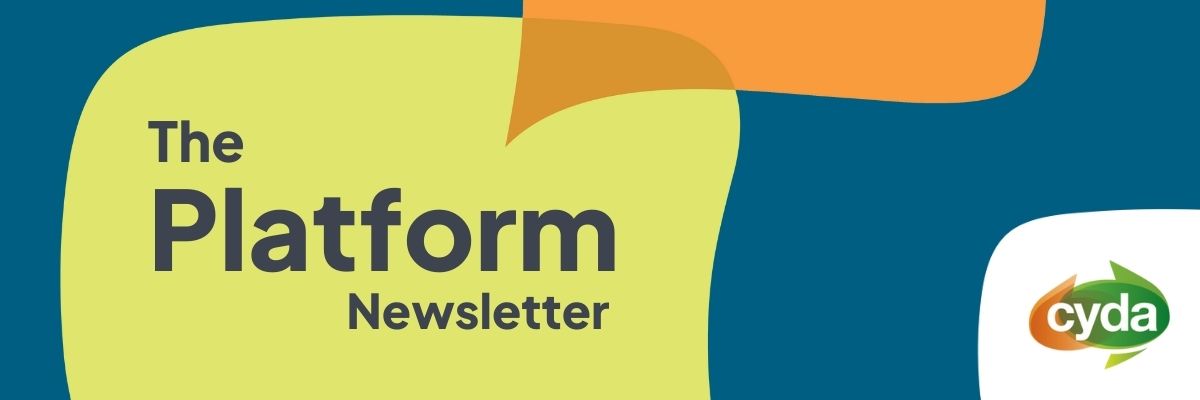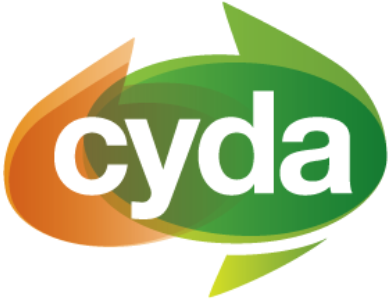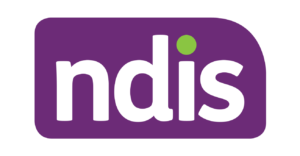How to write disabled characters
Dureece Moyden on what to do and what not to do when it comes to writing disabled characters.
The entertainment industry is now bigger than ever. It’s always been grand and affluent, that’s not new, but the current state of show biz is nothing short of colossal. And yet, disabled representation in the various sectors of entertainment is poor, to say the least.
Talent scouting is easier than ever thanks to the internet, and there are plenty of talented disabled folks all around town. So why aren’t we being represented? And when we are, why is it done so damn poorly?
As an aspiring fiction writer, I think about this often. On my own, there’s not much I can do to increase the number of disabled characters being written, other than writing them myself (which I fully intend to do). But for anyone that’s interested in writing a disabled character, I’ve written this guide on how you can do it tastefully (in my opinion, anyway).
So here’s how to write disabled characters, from the mouth (or rather, keyboard) of a disabled person themselves.
I’ll cover common mistakes to avoid, things you should do, and highlight a few disabled characters that I think are done really well. Let’s get to it!
1) Interview disabled people
This is probably the most important point I’ll be making and the framework for writing any disabled character.
If you aren’t disabled, you probably won’t have a good idea of how to make disabled characters authentic, because you aren’t familiar with what we experience.
Most of the time I see a disabled character who isn't written well, it's kind of obvious that the author hasn't spent much time with disabled people. The characters come off as inorganic or just unsatisfying in general, even to viewers who aren't disabled.
When people make a story about a demographic they aren’t familiar with, it’s actually very common to interview people from that demographic. So doing this extra bit of research is really just part of being a good writer.
Also, make sure to interview a variety of people – different age groups, cultures, disability types – make your net as wide as possible.
While the disabled community often has many overlapping experiences, we’re not a monolith. That one disabled guy you’re friends with won’t have the same experience as another disabled person watching your show. We all have different lives, and your characters will reflect that if you’ve done comprehensive research.
2) Superpowers shouldn’t cancel out a disability
Almost every time I see a disabled character with superpowers, their powers essentially reverse the impacts of their disability or make them so powerful that their disability doesn’t get in the way.
This is a really bad depiction of what it’s like to be disabled, because their abilities haven’t been hindered at all. After all, disability means that someone’s ability to do things has been affected.
When this happens, it is not good representation, and it undersells the immense effort required to live as a disabled person in our society.
A notorious example of this is the Marvel hero Daredevil. Daredevil is a blind superhero whose other senses are elevated to superhuman levels, allowing him to navigate the world with no difficulty at all.
Even though he’s technically blind, he’s not really disabled because his powers mean that he has absolutely no issues navigating the world at all. His blindness doesn’t get in the way of his life and his remaining senses make him far more powerful than a person who does have their vision.
Don’t get me wrong, I love Daredevil, but he doesn’t represent what living with a disability is like. It’s not that easy for us.
A better example of a blind, but powered character would be Toph from Avatar: The Last Airbender. Toph is a blind girl who can manipulate rocks and minerals, and she’s able to ‘see’ things by feeling through the earth. However, she’s at a disadvantage when objects are thrown because she can’t scan things that are in the air, or anything else not touching the ground.
Toph’s blindness isn’t cancelled out by her powers – they’re essentially just a really powerful mobility aid – but she’s still definitely disabled, and often has to work around this. Toph gets a thumbs up.
Just to reiterate, I’m not offended by Daredevil’s character and he’s one of my favourite superheroes, but he’s not a win for disabled representation.
3) Their disability shouldn’t be their entire personality or story
This one’s a massive problem and is probably the most common gripe I have with disabled characters. If you’re going to put a disabled person in your story, don’t just make them ‘the disabled person’. Make them a real, authentic human. A three-dimensional person with likes, dislikes, pet peeves, all that good stuff.
Don’t just create James ‘the disabled character’. Create James, the 24-year-old law student who likes jazz music and always forgets to turn the stove off. Oh, and who also happens to use a wheelchair. Being disabled should be one of many parts that make up a character. It shouldn’t be the only trait they have.
Additionally, a disabled character's motivations and storyline shouldn't only be about their disability. Disabled folks don't just wake up in the morning and think 'oh, I can't wait to go do disabled things today'. We have goals and interests like everyone else. We just happen to be disabled.
You could make a story about a disabled person who wants to become a musician but is struggling with it, not even necessarily because they’re disabled but maybe because they’re feeling uninspired by the state of modern music (which is very understandable).
Also, while it’s technically okay to make stories that focus solely on disability, unless you’re a disabled person yourself, I’d probably avoid it. Those types of stories are valid when written with care, but unless you’ve got the lived experience, it’s going to be hard to get it right.
Besides, we already have enough stories like that. At this point, we really just need more stories about disabled people just living normal lives like everyone else, and pursuing the same goals that anyone else would.
4) Making them too perfect
This kind of ties in with my previous point. To make your disabled characters authentic and three-dimensional, they also need to have flaws.
One of the worst disabled tropes is when the character is just so unbelievably kind and friendly, and just generally has no shortcomings at all. These characters feel really inorganic, and are kind of painful to watch because nobody on earth is like that, disabled or not.
I think the reason these ‘perfect disabled characters’ exist is because writers are afraid of offending people with a’“bad’ disabled character. But it’s actually having the opposite effect; these characters are so hollow and boring that they’re not liked by anyone, and so it’s not helping disabled representation at all.
Even worse, it feels like the only value these characters have is the fact they’re super nice to everyone and pamper the non-disabled protagonist, which feels uncomfortably close to real life, and how disabled people often don’t get accepted by people unless we go out of our way to pamper and worship the ground they walk on.
It gets even worse when the perfect disabled character is some sort of scientific genius and is only valued because they can create sci-fi level gadgets. When a disabled character’s value is limited to something so unrealistic and unrelatable, it sets a viciously high bar and further implies that disabled people need to ‘make up’ for being disabled by offering something extravagant to the world.
Most disabled people aren’t genius inventors, and neither is most of the population. It’s okay for disabled characters to have good traits and achievements, but try to keep it realistic in the same way you would for the non-disabled characters.
On a closing note, I really think that the best thing to keep in mind when writing disabled characters is just treating them like people. Don’t think of them as ‘different’, because that’s where all the mistakes happen.
It’s simple. First, just imagine a character without a disability. Whatever that image or process looks like to you is essentially how you should write a disabled character, the only difference being that the disabled person has a few extra needs. Easy!
If you’d like to see more examples of well-written disabled characters, check out the following characters and their stories:
- Oracle, from DC comics, who does a great job of learning to live with an acquired disability and the abrupt change in lifestyle.
- Johnny Joestar, from Jojo’s Bizarre Adventure, perhaps the absolute best example of a disabled character with superpowers.
- Hiccup and Toothless, from How to Train Your Dragon.
- Edward Elric, from Fullmetal Alchemist: Brotherhood (do NOT watch the 2003 version, trust me. Just go straight to Brotherhood.)
- Virtually every single character from Katawa Shoujo. That game is a masterclass in how to write organic, tasteful depictions of disabled people, and pretty much aces every single point I’ve made above.
Anyway folks, that’s all from me.
Before you go, I’d just like to note that everything said in this post is my own opinion, and isn’t a definite right or wrong. You may find that some disabled people have different takes on the subject, which is totally fine.
Either way, I hope you enjoyed reading this and feel like you’ve walked away with something of value, or at least a new perspective to think about. Stay safe, everyone.
This article is an extract from CYDA’s The Platform Newsletter. Receive monthly updates by subscribing below.

About the author:
Dureece is a 25-year-old film student who lives with DPDR, a type of dissociative disorder. As someone with an acquired condition, he is very familiar with the lack of awareness and empathy that many people have towards disabilities. He wants to help close the gap by drawing from his experience as a formerly “able” person. He hopes that through his work in CYDA and his film endeavours, he can amplify the voices of young disabled people and anyone else whose story needs to be told.

The Platform is our newsletter for young people with disability, featuring interviews, opportunities and news on the issues that matter to you!







